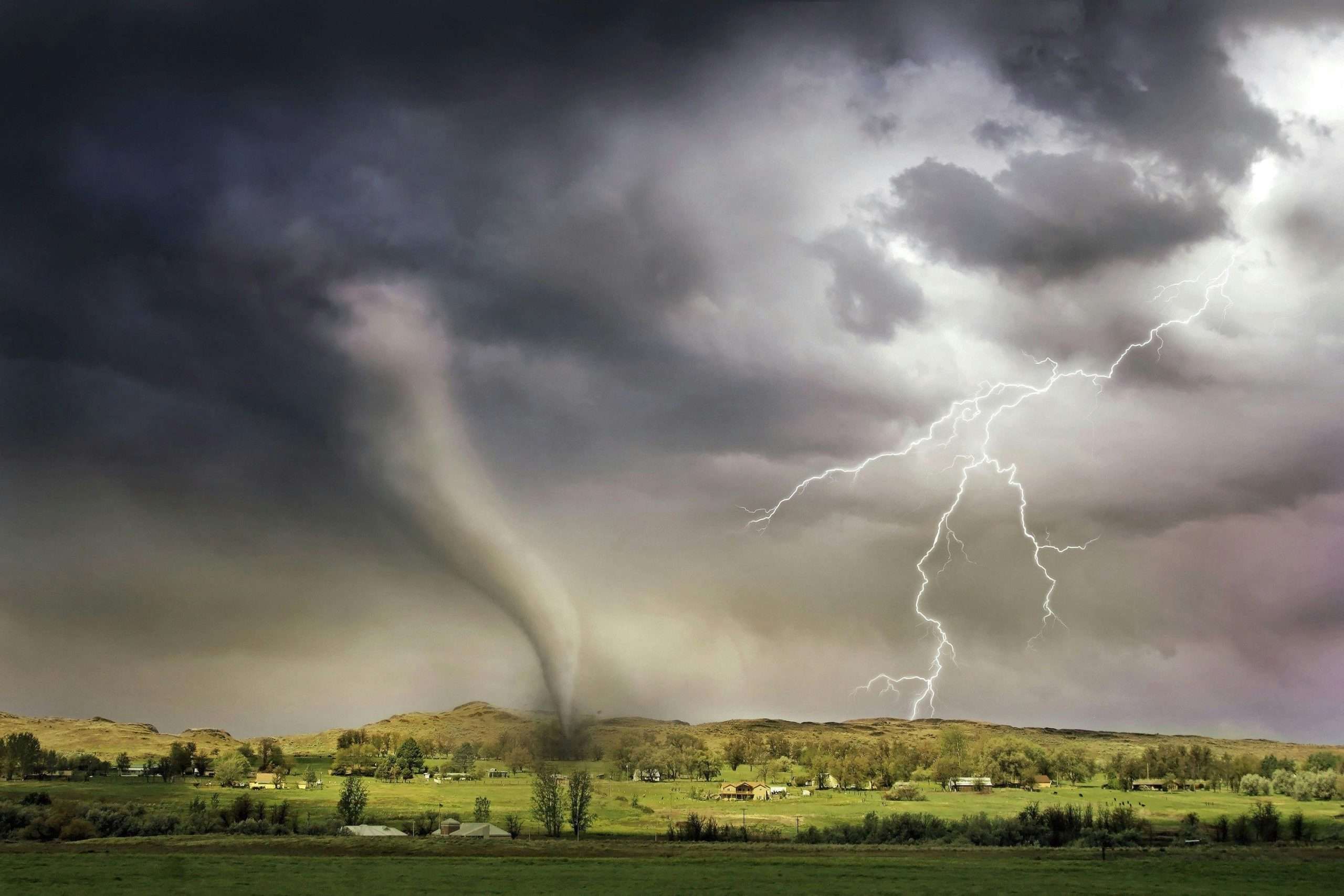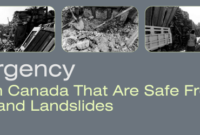Tornado Resistant Home – Tornadoes are some of nature’s most destructive forces, capable of leveling entire neighborhoods in a matter of minutes.
For those living in tornado-prone regions, building a tornado-resistant home is not just a matter of comfort but survival.
Here’s how you can design and construct a house that can withstand these violent storms, ensuring both safety and long-term durability.
1. Foundation: Anchoring the Home
The first step in building a tornado-resistant house is establishing a strong foundation. Tornadoes can produce winds exceeding 200 mph (320 km/h), which can easily lift a poorly anchored structure. A strong connection between the foundation and the home is essential. Here are the key aspects:
- Deep Pile Foundations: This technique uses steel or concrete piles driven deep into the ground, providing added resistance against the lifting forces of tornadoes.
- Anchor Bolts: These bolts connect the walls to the foundation, preventing the home from being torn away by the wind. Steel straps or tie-downs further reinforce the connection between the roof, walls, and foundation – Tornado Resistant Home.
Read also:
2. Walls: Reinforced and Impact-Resistant Materials
The walls of a tornado-resistant home must withstand both extreme winds and flying debris. Tornadoes can turn everyday objects like branches, bricks, and metal into high-speed projectiles. Using strong, impact-resistant materials can make a significant difference.
- Concrete or Insulated Concrete Forms (ICFs): ICFs are popular because they provide excellent resistance to wind and debris while offering superior insulation. Concrete blocks or poured concrete can also be reinforced with steel bars for added strength.
- Steel or Kevlar Reinforcement: Adding layers of steel mesh or Kevlar within the walls can further increase resistance to punctures from flying debris.
- Sheathing and Bracing: Utilizing structural sheathing like plywood or OSB (oriented strand board) combined with diagonal braces ensures that walls maintain their shape under extreme pressure.
3. Roof: Stronger Than the Storm
The roof is often one of the first parts of a home to be damaged in a tornado. To prevent roof lift-off, it must be securely attached to the rest of the structure and designed to handle high wind speeds.
- Hip Roof Design: A hip roof slopes down on all sides, making it more aerodynamic and less susceptible to wind damage compared to gable roofs. This design minimizes the surface area exposed to strong winds.
- Roof Straps and Hurricane Clips: These metal straps connect the roof to the walls, reducing the chance of the roof being lifted off by high winds. Hurricane clips are particularly effective in tornado-prone areas, ensuring a stronger attachment between rafters and wall plates.
- Impact-Resistant Shingles: Choose shingles rated for high winds and resistant to impact from flying debris. Metal roofing is also an excellent choice for durability – Tornado Resistant Home.
4. Windows and Doors: Strength in Vulnerable Areas
Windows and doors are among the most vulnerable parts of a home during a tornado, as they can easily shatter or be blown inwards. Reinforcing these areas can prevent catastrophic damage.
- Impact-Resistant Glass: Installing windows with impact-resistant glass, which consists of multiple layers of laminated glass, can significantly reduce the chances of shattering. Storm shutters can also provide additional protection.
- Reinforced Entry Doors: Solid, reinforced doors with heavy-duty frames can withstand high winds and flying debris. Garage doors should also be reinforced, as they are large and prone to buckling under pressure.
- Secure Door Frames: It’s not just the door that matters; the frame should also be reinforced and tightly secured to the structure to prevent it from being blown out.
5. Safe Rooms: A Last Line of Defense
Even with all the preventive measures, a direct hit from a powerful tornado can be devastating. For maximum safety, a tornado-resistant home should include a dedicated safe room.
- Basements: If possible, building a basement offers a natural refuge from tornadoes. However, the walls and ceiling must be reinforced to prevent collapse.
- Above-Ground Safe Rooms: These rooms are constructed from reinforced concrete or steel and are designed to remain intact even if the rest of the house is destroyed. Safe rooms should meet FEMA guidelines for withstanding extreme winds and debris impacts.
6. Building Codes and Tornado Zones
Building a tornado-resistant home often requires adhering to local building codes, which vary based on the level of tornado risk in the area. In the U.S., for example, homes in “Tornado Alley” (parts of Texas, Oklahoma, Kansas, Nebraska, and the surrounding regions) must often meet stricter standards than those in less vulnerable regions.
- FEMA Standards: Homes built to FEMA’s “Safe Room” standards ensure that a dedicated shelter within the home is able to withstand the full force of an EF5 tornado (winds above 200 mph).
- Local Building Regulations: Depending on your location, your home may need to meet specific wind-load requirements or include additional structural reinforcements. Working with a builder familiar with tornado-resistant design is crucial for meeting these standards.
7. Landscaping and Surroundings: Minimizing External Risks
The area surrounding your home can also impact its resistance to tornadoes. By carefully planning your landscaping, you can reduce potential hazards.
- Avoid Tall Trees Close to the House: Tornadoes can easily uproot trees and send them crashing into homes. Plant trees at a safe distance and avoid tall varieties near the house.
- Clear Debris: Keep your yard free of loose items like lawn furniture or toys, as these can become dangerous projectiles during a tornado.
- Windbreaks: Strategic planting of shrubs or wind-resistant trees at a distance can help slow down winds before they reach your home, offering a layer of protection.
Conclusion
Building a tornado-resistant home requires thoughtful design, strong materials, and attention to both structure and surroundings.
From a solid foundation to a well-secured roof, each element plays a crucial role in ensuring your home can withstand a tornado’s destructive forces.
While no home can be entirely tornado-proof, incorporating these strategies will significantly increase your home’s chances of surviving a tornado and keeping your family safe.
Afghanistan,Albania,Algeria,Andorra,Angola,Antigua and Barbuda,Argentina,Armenia,Australia,Austria,Azerbaijan,The Bahamas,Bahrain,Bangladesh,Barbados,Belarus,Belgium,Belize,Benin,Bhutan,Bolivia,Bosnia and Herzegovina,Botswana,Brazil,Brunei,Bulgaria,Burkina Faso,Burundi,Cabo Verde,Cambodia,Cameroon,Canada,Central African Republic,Chad,Chile,China,Colombia,Comoros,Congo,Democratic Republic of the Congo,Republic of the Costa Rica,Côte d’Ivoire,Croatia,Cuba,Cyprus,Czech Republic,Denmark,Djibouti,Dominica,Dominican Republic,East Timor (Timor-Leste),Ecuador,Egypt,El Salvador,Equatorial Guinea,Eritrea,Estonia,Eswatini,Ethiopia,Fiji,Finland,France,Gabon,The Gambia,Georgia,Germany,Ghana,Greece,Grenada,Guatemala,Guinea,Guinea-Bissau,Guyana,Haiti,Honduras,Hungary,Iceland,India,Indonesia,Iran,Iraq,Ireland,Israel,Italy,Jamaica,Japan,Jordan,Kazakhstan,Kenya,Kiribati,Korea North,Korea South,Kosovo,Kuwait,Kyrgyzstan,Laos,Latvia,Lebanon,Lesotho,Liberia,
Libya,Liechtenstein,Lithuania,Luxembourg,Madagascar,Malawi,Malaysia,Maldives,Mali,Malta,Marshall Islands,
Mauritania,Mauritius,Mexico,Micronesia Federated States of Moldova,Monaco,Mongolia,Montenegro,Morocco,
Mozambique,Myanmar (Burma),Namibia,Nauru,Nepal,Netherlands,New Zealand,Nicaragua,Niger,Nigeria,North Macedonia,Norway,Oman,Pakistan,Palau,Panama,Papua New Guinea,Paraguay,Peru,Philippines,Poland,Portugal,Qatar,Romania,Russia,Rwanda,Saint Kitts and Nevis,Saint Lucia,Saint Vincent and the Grenadines,Samoa,San Marino,Sao Tome and Principe,Saudi Arabia,
Senegal,Serbia,Seychelles,Sierra Leone,Singapore,Slovakia,Slovenia,Solomon Islands,Somalia,South Africa,Spain,Sri Lanka,Sudan,Sudan South,Suriname,Sweden,Switzerland,Syria,Taiwan,Tajikistan,Tanzania,Thailand,Togo,Tonga,Trinidad and Tobago,Tunisia,Turkey,Turkmenistan,Tuvalu,Uganda,Ukraine,United Arab Emirates,United Kingdom,United States,Uruguay,Uzbekistan,Vanuatu,Vatican City,Venezuela,Vietnam,Yemen,Zambia,Zimbabwe,
Alabama, Alaska, Arizona, Arkansas, California, Colorado, Connecticut,
Delaware, Florida, Georgia, Hawaii, Idaho, Illinois, Indiana, Iowa, Kansas, Kentucky, Louisiana, Maine, Maryland, Massachusetts, Michigan, Minnesota, Mississippi, Missouri, Montana, Nebraska, Nevada, New Hampshire, New Jersey, New Mexico, New York, North Carolina, North Dakota, Ohio, Oklahoma, Oregon, Pennsylvania, Rhode Island, South Carolina, South Dakota, Tennessee, Texas, Utah, Vermont, Virginia, Washington, West Virginia, Wisconsin, Wyoming,






